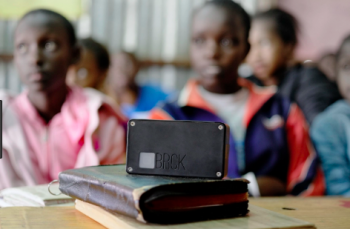By Natasha Elbech
Despite progress in ICT infrastructure over the past decade, accessibility and affordability remain great barriers to digital access in Africa. While technological innovation has fueled social and economic development across urban and rural areas, severe resource constraints, geographic barriers, internet volatility and high market prices prevent a concrete solution to bridging the digital divide across Africa. That being said, how do you bring reliable power and viable internet options to a continent of 1.1 billion people? Nairobi-based tech startup BRCK is already engineering a solution.
As the world’s fastest growing mobile phone market, there is a clear demand for more affordable and higher quality internet service options. Because most Africans surf the web on mobile phones, online content from overseas is accessed through streaming and downloading onto personal devices. However, slow network performance and limited data storage hinders on-demand internet access and hikes up the cost of broadband and data services. BRCK CEO Erik Hersman knew that at the root of the problem was technology designed for consumers in Europe and the United States being used and distributed in Africa. Instead of outsourcing products that do not fit Africa’s unique infrastructure needs, BRCK builds software, hardware and firmware for Africans, by Africans. Since 2013, BRCK has designed and brought to market three products intended to connect the masses – the BRCK v1, Kio Kit for Education, and most recently, the SupaBRCK.

The BRCK v1 was a first step towards bringing open WiFi access to rural and disconnected areas. Acting as a backup generator for the internet, the v1’s portability, 16GB hard drive and ability to support up to 20 devices was proven successful in 45 countries worldwide. The v1 was eventually phased out in 2015 and replaced by the SupaBRCK, introducing a content delivery network (CDN) for optimal data storage and user experience. “SupaBRCK was born out of the need to solve the problems not just of connectivity and power issues in Africa, but of edge computing and off-grid data storage,” Erik Hersman told Forbes. Designed in partnership with Intel, the SupaBRCK is a self-powered router that serves ad-supported free public WiFi access and serves locally cached content. Intended for small businesses and urban public spaces, this hardware holds up to 5TB of hard drive, has 10+ hour battery life, and is both shockproof and weather-resistant. Accompanied by WiFi service platform Moja, the SupaBRCK serves a high performance network that overcomes premium costs for data storage and usage to connect small businesses to their local communities and commercial markets.
Leveraging technology towards early childhood education, BRCK Education provides the tools and resources to turn any classroom into a digital one. BRCK delivers Kio Kits, a package of 40 ruggedized tablets and a SupaBRCK hosting a digital learning interface to thousands of children in 11 countries worldwide. The Kio Kit runs on solar power and utilizes cloud synching to serve educational content offline so intermittent WiFi access and inclement weather do not disrupt classroom environments. By placing an emphasis on connectivity, education, and enterprise IoT, BRCK is pushing a decentralized model of internet distribution and empowering Africans of all ages in the digital age.


